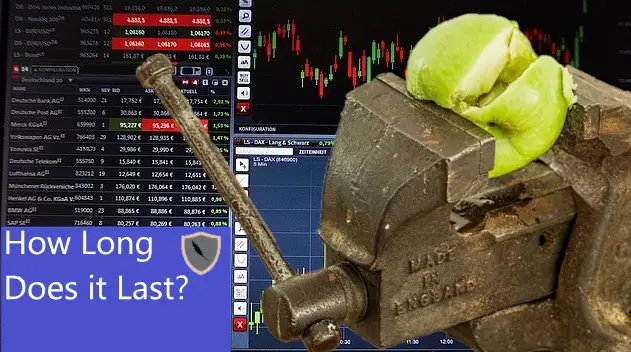You might have noticed that some stocks in the market don’t have options associated with them. For some investors this can be a problem because they won’t be able to execute their trading strategy. I completely understand and that’s why this article goes over exactly why those stocks don’t have options available for them.
In order for a stock to have options available to trade they must satisfy certain standards set by their hosting exchange. While each exchange sets their own standards for opening options trading they all revolve around the following list. (source for standards of listing for Chicago exchange, pg 76.)
- The stock must be listed on the NMS.
- The stock must be widely traded with 2,000 accounts holding at a given time.
- There must be at least 7,000,000 shares held by individual investors.
- The stock must have a price of over $7.50 if not a covered security ($3.00 if covered).
This list can be seen as the “guidelines” that other exchanges follow. Generally the exchanges want to see a diversity in the type of options offered on the exchanges and they reserve the right to remove options at any given time.
Here at Chronohistoria I teach people how to generate above normal market returns. I routinely publish articles that go over investment research, methodologies, and tips/tricks so that you are better prepared.
Feel free to sign up for the free newsletter to remain up to date on all things investing.
Stock Options Listing Requirement 1: Stock Must Be Listed On the National Market Exchange
The National Market Exchange serves to connect all major exchanges within the United States. This is what allows stocks to be priced the same across the multiple exchanges within the United States.
If the stock wants to have options trading on their ticker fails to be listed on the national market exchange then it wont have options trading. This is because the stock will fail to update its pricing across the different exchanges. In turn this will lead to massive price volatility, which can trigger options.
If your stock is part of the pink slips or any other lower exchange then chances are it’s not part of the NMS. Therefore it wont have options associated with it. (source)
If the stock becomes listed on the NASDAQ then it will be part of the NMS which means then it only has to fulfill the other listing requirements.
Stock Options Listing Requirement 2: The Stock Must Be Widely Traded with 2,000 accounts holding at a given time.
In order to reduce volatility there needs to be accounts holding the shares. For the Chicago Board of Exchange this magic number is 2,000 accounts.
The reason behind this is because options trading has to have holders of an asset in order to work. Each option contract gives the contract holder the right to buy and sell shares to another person in the future. If nobody is holding the shares in their account, then how will the options contract work?
This is why there needs to be enough people holding the shares in their accounts to warrant options contracts. If your potential stock has nobody holding it then options contracts will never become a reality.
Stock Options Listing Requirement 3: There must be at least 7,000,000 shares held by individual investors.
It’s one thing to have 2,000 accounts holding shares, it’s another to have at least 7,000,000 shares held by individual investors.
The reason this requirement exists for having stock options is to limit the amount of volatility while also making sure that the stock actually has volume. Without the 7,000,000 share requirement options trading would dominate the price movement of a stock.
This in turn could lead to dramatic price swings which is only good for a handful of people and not investors as a whole.
Further, having 7,000,000 shares held by individual investors guarantees that there are enough shares in the public float to allow for contracts to be exercised. Here is a good article that goes over how a large stock float impacts volatility and liquidity. (source)
Simply put, this requirement helps to prevent the stock’s price from swinging too much from options contracts.
Stock Options Listing Requirement 4: The Stock Must Have A Price Of Over $7.50 If Not A Covered Security ($3.00 if covered).
This requirement prevents cheaper stocks from having options.
This means that penny stocks wont have options contracts associated with them. If penny stocks were allowed to have options then it would be much easier to have manipulation.
This is because options contracts reserve the buying power of 100 shares for a fraction of the normal cost. If penny stocks were allowed to have options then you or me could buy thousands of contracts and exercise them, thus pushing the price up or down almost instantly.
Naturally this would be price manipulation. Having a stock price requirement means that it would take considerably more capital to move a stock’s price. This in turn protects the average consumer from something called a Gamma Squeeze.
In essence this requirement prevents stock manipulation by the average retail investor.
Summary Of Why Some Stocks Don’t Have Options
The simple answer is that the stock is not big enough. Not enough people hold the shares, trade them, or the stock is not priced high enough. If you own a stock that is moving towards achieving all of the listing requirements for options then you can be almost certain that it will increase overall volatility. You can invest off this increase in volatility in the long term and make some decent returns.
Conclusion
Not all stocks will have options available to trade. This can make it frustrating for some investors who notice a trend evolving but lack the tools to profit from it.
However it is important to know what criteria or requirements a stock must fulfill before it gets options. So long as you know this you can start predicting when an exchange will open options trading, which means you can invest in the action.
Here at Chronohistoria I teach people how to generate above normal market returns in the stock market. I routinely publish articles that go over investment research, methodologies, and tips/tricks so that you are better prepared to generate capital. Feel free to sign up for the free newsletter to remain up to date on all things investing.
Further, you can check out some of the other articles below.
-
How Long Does a Short Squeeze Last? (3 Answers)

What is the time frame for you short squeeze? Well here is everything you will ever need to know to determine how long it will last.
-
Why You Still Own a Stock After It’s Delisted and How to Sell It

Do you still own a stock after its delisted? How do you sell it? Don’t worry the stock is still worth money and here is how to sell.
-
Can You Make 1% A Day in the Stock Market? (3 Steps)

Making 1% a day in the stock market is hard but defiantly doable. Here are 3 simple steps to helping you achieve this return.
Until next time, I wish you the best of luck in your investing journey.
Sincerely,



